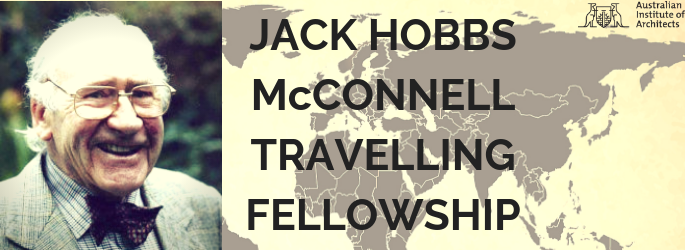
Throughout his outstanding career, and his significant contribution to the architectural profession as Australian Institute of Architects National President in 1968-69, as a Life Fellow, and as an Institute Gold Medalist in 1970, Jack McConnell had a remarkable capacity to lead and inspire others, with a number of Australia’s most prominent architects still acknowledging him today as their mentor.
He was born on 5 June 1913, and attended Haileybury School, Victoria, where he was awarded the McCaughay Scholarship to study architecture at the University of Melbourne, where he graduated with distinction at the age of 21.
In 1937, aged 26, as a leading modernist from the Melbourne offices of Harold Desbrowe Annear, Leighton Irwin, Marcus Martin and Edward F Bilson, he joined the architectural practice in Adelaide that became Claridge Hassell and McConnell, as the design architect for the new Bank of New South Wales, on the corner of North Terrace and King William Street.
From 1937 to 1970 he designed many outstanding buildings for both state and national clients and was particularly recognized for his prize-winning designs as one of the leading industrial architects in Australia.
Jack McConnell was the original lateral thinker –before the term had been invented. He always drummed into students and staff that design grew out of analysis – “first analyse, analyse, analyse!”
He said on many occasions that the Heinz Factory in Dandenong was the best job he ever did. He explained the ‘analyse’ principle as applied to this project:
- He knew nothing about canned food processing;
- He undertook what research he could;
- He prepared 10 pages of questions and presented them to Heinz in Melbourne;
- Heinz said we haven’t got a clue but we’ll send the questions to the United States;
- They sent them back, and said we don’t know the answers either. Send the young architect overseas to wherever he wants to go to find the answers.
- (It appears that Jack’s “research and analyse” technique was suggesting by the questions he asked, not only a new architectural approach, but new and innovative factory planning and processing techniques. This was new and foreign to them).
McConnell visited the US and Canada, the UK and Spain, did extensive research and analysis, returned and wrote his report – including his own answers to his own questions – and presented it to Heinz. They took one look and said you’re the architect and now the expert, go for it!
It subsequently won the Australian Architects and Arts Award in 1955.
He joined Stephenson and Turner Architects as a Partner in 1970 and continued to carry out major projects in that capacity. He retired from that partnership in 1980, but continued to undertake individual consulting work. He continued his involvement with the Institute as a member of various committees until 1992.
Jack McConnell had a great influence on post-World War II architecture in Australia, and left his mark in the form of architectural excellence in many of his prestigious buildings both in South Australia and in other states.
More importantly, he influenced and inspired many students and architects to produce better architecture, not only in terms of design, but also of function.
‘Jack McConnell’s influence in shaping the architects and the architecture of Australia was considerable. He pioneered modern architecture in South Australia and was without doubt the first serious modernist to build modern buildings in Adelaide’
Warren Kerr
National President of the Institute at the time of Jack’s death in April 2005
* Biographical notes by Keith Neighbour, LFRAIA
